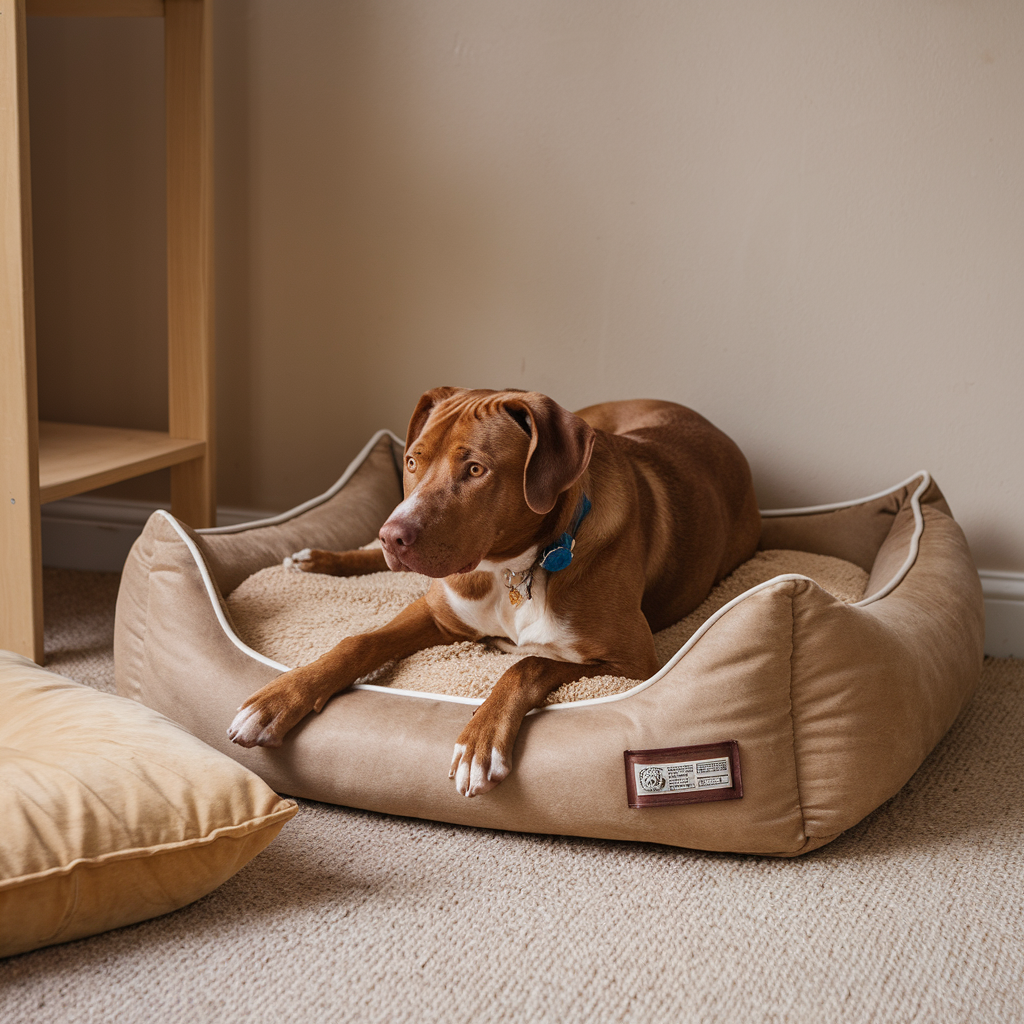Address
304 North Cardinal
St. Dorchester Center, MA 02124
Work Hours
Monday to Friday: 7AM - 7PM
Weekend: 10AM - 5PM
Address
304 North Cardinal
St. Dorchester Center, MA 02124
Work Hours
Monday to Friday: 7AM - 7PM
Weekend: 10AM - 5PM

Even if your dog can sleep in your bed, like children, dogs also need their own space. A dog bed provides a place for them to relax without feeling trapped or anxious.
When your puppy takes a nap during the day, they won’t have to lie directly on the floor, keeping them warm and reducing the risk of arthritis.
If someone in your family or a friend is allergic to your dog, it’s best to have them sleep on their own bed. This way, you can enjoy time with your dog during the day while still keeping your space clear at night.
You can also bring a dog bed when traveling, so your dog feels comfortable and can rest in a familiar place, reducing anxiety.
Dog beds are usually easier to clean. If your dog gets fleas or mites, or rolls in something smelly, washing their bed is much easier than cleaning your own.
Dog beds on the market generally fall into four categories: orthopedic, dome-shaped, mat-style, and tent-style. Each type has its own features.
1. Orthopedic Beds
Orthopedic dog beds have no top, allowing dogs to observe their surroundings while lying on them. These beds resemble shallow boxes and come in both square and round shapes. Surrounded by edges, dogs can use the sides as pillows.

2. Dome-Shaped Beds
These beds look like little houses, with a top that adds warmth, making them ideal for winter use.

3. Mat-Style Beds
These beds have no edges and resemble a blanket. They’re perfect for hot summer days since the fabric is soft and comfortable without being too hot.

4. Tent-Style Beds
Similar to camping tents, these beds are versatile for all seasons. You can add cushions to make them warmer, and they offer bug protection and breathability for outdoor use.

With so many dog beds available, how do you choose the best one? Consider factors like size, cost, comfort, your dog’s health needs, and convenience. It’s essential to research thoroughly and consult your vet before making a decision. Here are some key factors to consider:
1. Tailored Size
Dog beds come in various sizes. Some are suited for small breeds, while others fit medium or large dogs. When purchasing a bed, consider your dog’s size and whether they will grow. The bed should be long enough for them to stretch out and wide enough for them to turn comfortably. If your dog is expected to grow large, opt for a slightly bigger bed to avoid waste.
2. Easy to Clean and Maintain
Crumbs from treats or stains from ointments can make cleaning a hassle. Look for beds that are easy to disassemble and wash. This way, when your dog makes a mess, you can quickly clean it and keep the bed hygienic. Also, choose beds made from eco-friendly and non-toxic materials to avoid potential health risks.
Regularly replacing and washing the bed covers and cushions is also vital. This helps maintain cleanliness and effectively prevent skin issues and allergies.
3. Seasonal Beds
It’s ideal to have two types of dog beds at home: one for summer and one for winter. Summer beds often use mesh materials for good ventilation, while winter beds can be orthopedic or dome-shaped. If you find mat-style beds lacking support, you can add a soft cushion for extra comfort.
4. Safe Materials
Dogs love to dig and chew, which is instinctual behavior. If your dog chews on their bed and swallows filling, it could lead to emergencies. Opt for durable, pet-safe materials to minimize risks and keep your dog safe.
5. Soft and Comfortable with the Right Cushioning
Beyond the right size, the material and softness of the bed are crucial for sleep quality. A soft, comfortable bed can enhance their sleeping experience and relieve fatigue.
Consider materials with good cushioning and elasticity, like memory foam or sponge, that adapt to your dog’s shape and weight, providing even support and reducing pressure. For older or weaker dogs, choose a bed with medium firmness to avoid sinking, which makes movement difficult.
6. Match Your Home Style
There are various styles of pet beds available, from lace to sofa-style, tent, and fully enclosed beds. Think about your home decor and which type of bed will fit best.
The quality of your dog’s sleep directly impacts their health and mood. Thus, selecting a comfortable and suitable bed is our responsibility as owners. Your dog’s comfort and happiness are among our top concerns. By choosing the right bed and paying attention to their sleep quality, we can help them lead healthier, happier lives.